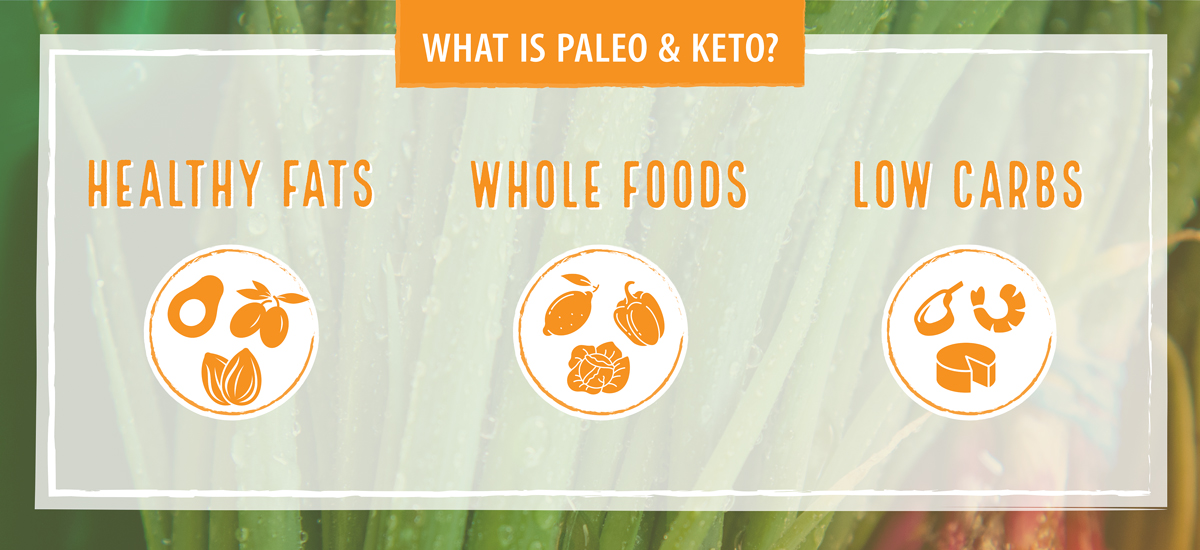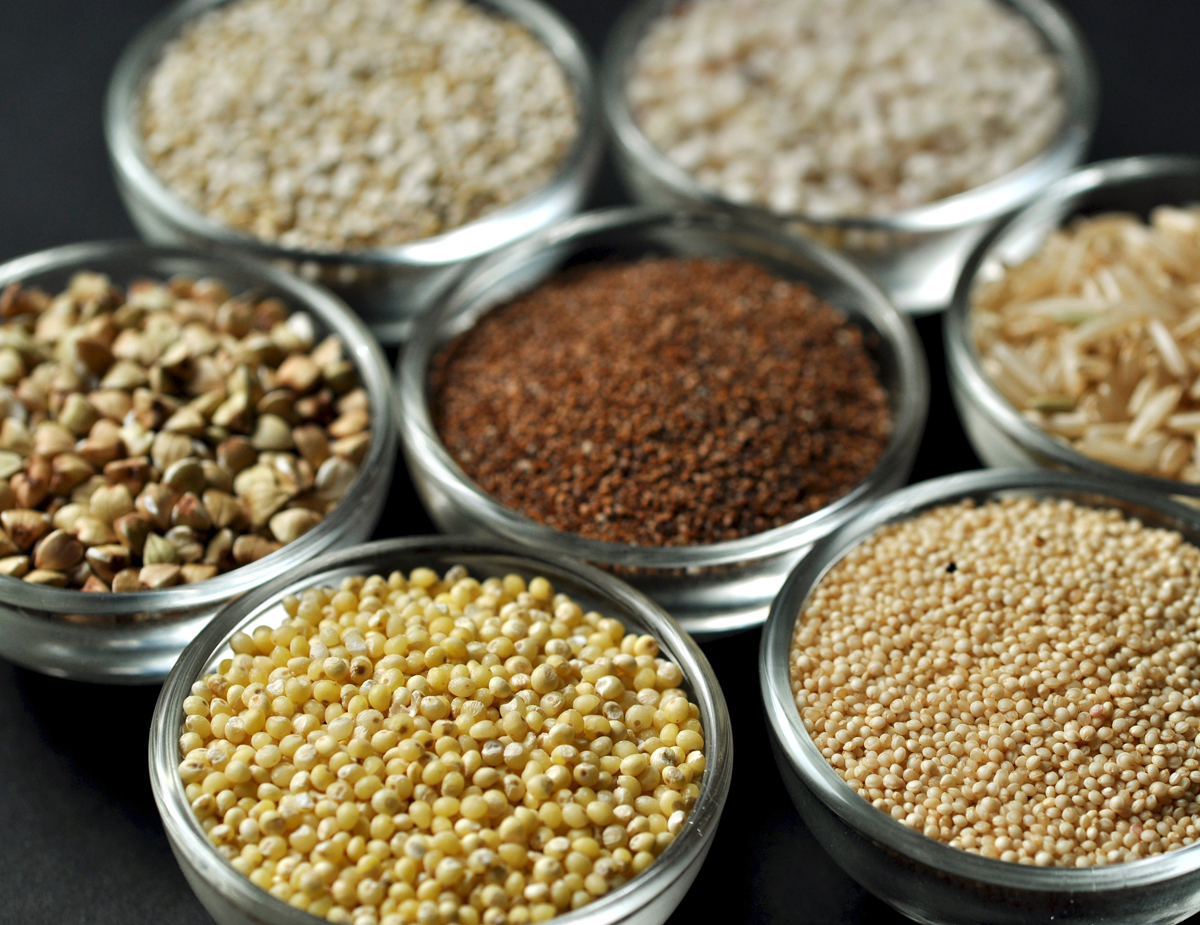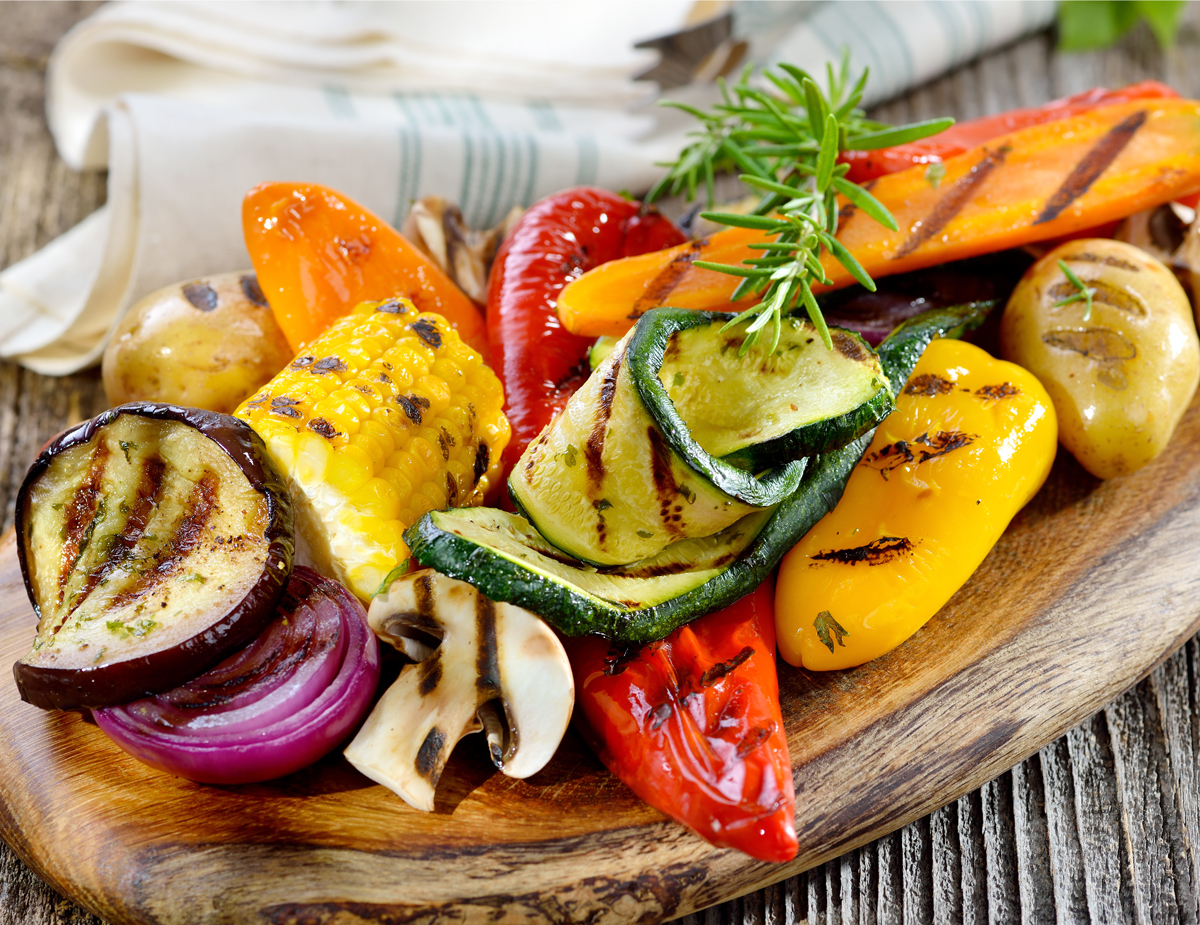
Paleo & Keto: What are the similarities and differences?
In recent years, both keto and paleo lifestyles have become popular among those seeking a healthier way to eat. Proponents say either can help you lose weight and feel more energized. While they share some common components, there are also some key differences. Both lifestyle choices require commitment and an understanding of the benefits and risks.
The meat of the argument
Despite its recent surge in popularity, the ketogenic or “keto” way of eating has been around for more than 100 years, when it first gained interest as a treatment for epilepsy. The goal is to restrict the intake of carbohydrates, thereby encouraging our bodies to enter a state of “ketosis” in which we break down fat (instead of sugar) for energy. The process for reaching ketosis can take several days. This type of dietary shift can be drastic for some, because nearly half of the typical American diet is in the form of carbohydrates (foods like grains, cereals and fruit). Keto devotees instead focus on high-protein and high-fat foods, such as meat, cheese, dairy, nuts and eggs.
Paleo: Back to the future
In one sense, the paleolithic or “caveman diet” isn’t exactly new either, since it promotes eating as our ancestors did during the Stone Age, dating back as far as 3 million years or so. The theory is that the modern prevalence of many health conditions, such as obesity and diabetes, are because our bodies are not meant to consume the processed foods of modern day. The focus instead is on “hunter-gatherer” foods, such as lean meats and fish, fruits, eggs, vegetables and nuts, including oils from fruits and nuts, such as olive oil or coconut oil. Paleolithic proponents avoid foods raised with modern farming methods, which means no grains, dairy, beans, potatoes or peas. In addition, there are many different types of paleo plans, with some favoring low-carb alternatives.
The same, yet different
Both keto and paleo lifestyles focus on high-protein foods, like meat, nuts and eggs, as well as leafy green vegetables. But there are a few key differences: Dairy foods – cheese, milk and yogurt – are a big part of keto eating but are restricted on paleo plans. Conversely, some paleo diets encourage the consumption of fruit, while sweeter fruits like apples and oranges are restricted in a keto regimen.
Health benefits and concerns
Some who take up keto have reported fairly rapid weight loss once their bodies acclimate to relying on fats for energy. However, some experts say relying on high-fat diets can be detrimental in the long-term, especially for people with heart or kidney issues. Another possible concern is that a lack of dietary fiber can lead to digestive issues.
Many paleo followers have found that a protein-rich and plant-heavy diet helps them feel fuller. Some people are also better able to control their blood sugar levels. A prolonged reduction in dairy foods, however, can lead to low calcium levels with potential negative effects on bones.
When considering any dietary lifestyle change, be sure to consult with a medical professional to assess any potential risks that could be unique to you.
Choices abound at your Market
If you decide to explore keto or paleo living, Market of Choice provides numerous choices to support you. Look for keto or paleo indicators in product descriptions in shopping aisles and in our Weekly and Savories ads. In the Market of Choice Kitchen, you can find many prepared foods that meet keto and paleo guidelines. If you have questions, please ask our Kitchen Clerks for an ingredient list.
Keto shopping list
Focus on low-carb, high-protein foods to encourage your body to use fat as an energy source.
✓ Dairy: butter, cheese, plain yogurt, cottage cheese (limit milk, which includes higher levels of carbohydrates)
✓ Eggs
✓ Seafood: Salmon is high in healthy omega-3 fats and virtually carb-free.
✓ Fruit: Many fruits can be high in sugars, but berries are comparatively low in moderation and high in fiber. Avocados are a rich food source and high in healthy fats.
✓ Meat & Poultry: Beef, Chicken, Pork
✓ Nuts & Seeds: Most nuts are low-carb, with the exception of cashews being somewhat higher.
✓ Oils: Coconut oil and olive oil
✓ Vegetables: asparagus, broccoli, cabbage, cauliflower, eggplant, green beans, kale, lettuce, peppers, spinach, tomatoes, zucchini
✓ Coffee & Teas, Unsweetened
✕ Avoid: carbohydrates, including cereals, breads, pasta, sweets, candy, bananas, potatoes
Paleo shopping list
Focus on foods with minimal to no processing and foods that are harvested naturally.
✓ Eggs
✓ Seafood
✓ Fruit: apples, bananas, oranges, berries
✓ Meat & Poultry
✓ Nuts
✓ Oils: coconut oil and olive oil
✓ Vegetables: potatoes, yams, cauliflower, broccoli, cabbage, lettuce, spinach
✕ Avoid: processed foods, most dairy products, grains, vegetable oils, legumes (beans, lentils, peanuts, peas and more), sodas, refined salt, artificial sweeteners, beer, sugar and corn syrups
To read more about the history, research and guidelines for ketogenic and paleolithic lifestyles, check out the links below:
KETO
https://en.wikipedia.org/wiki/Ketogenic_diet
https://www.nm.org/healthbeat/healthy-tips/nutrition/pros-and-cons-of-ketogenic-diet
https://extension.psu.edu/the-ketogenic-diet-is-it-for-you
https://blogs.webmd.com/food-fitness/20180329/should-you-try-the-keto-diet-a-nutritionist-weighs-in
https://www.healthline.com/nutrition/ketogenic-diet-foods
PALEO
https://en.wikipedia.org/wiki/Paleolithic_diet
https://www.webmd.com/diet/a-z/paleo-diet
https://health.ucdavis.edu/welcome/features/2014-2015/06/20150603_paleo-diet.html
https://www.healthline.com/nutrition/paleo-diet-meal-plan-and-menu
Explore More Topics
Related Posts
- Seven Gluten-Free Grains and How to Enjoy Them
Eating gluten-free doesn’t mean giving up on all grains. In fact, there are only a few grains you need to avoid.
- Grill summer vegetables, fruits for easy seasonal flavor
With so much of summer’s bounty making its way from the farms to your grocery basket this time of year, finding new ways to enjoy it is key.
- From Bakon to JUST Eggs, plant-based breakfast foods are the real deal
Vegans who adhere to a plant-based lifestyle leave meat products off their plates, but thanks to an expansion in innovative, plant-based foods to meet the growing demand, the makings for a fully plant-based breakfast, including bacon-like “meat” and eggy-tasting “eggs,” is perfectly possible.



